We see things as we see them because of how our eyes are designed.
Our eyes can only see something known as visible light. This is a range of electromagnetic radiation that literally includes all of the colours of the rainbow.
Though that includes a lot of colours, the visible range is only a small part of the entire range of electromagnetic radiation. See?
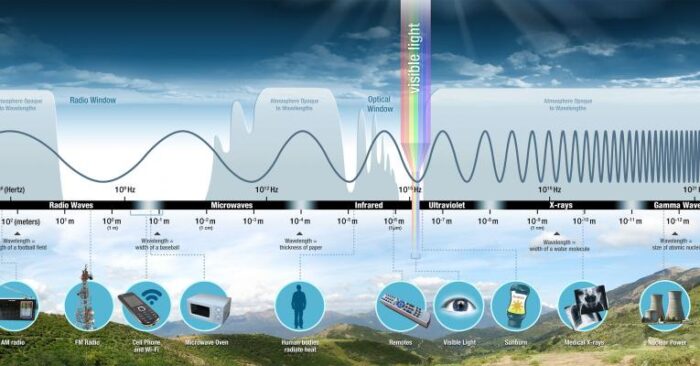
This chart shows the range of the electromagnetic spectrum. Look how small the range of visible light is! (NASA)
This is why space agencies like NASA have designed their probes and telescopes to be able to see radiation beyond visible light, such as infrared (below red), ultraviolet (beyond violet), and X-rays. And when they use these devices, even objects that we're used to seeing look very different. Astronomers get a glimpse at things that were invisible before.
Just last month, the infrared James Webb Space Telescope (JWST) proved this by providing a stunning image of Saturn.
So here's a gallery of cool infrared and ultraviolet images of planets in our solar system alongside how they look in visible light.
Get ready to see the solar system like you never have before! What differences can you see?
Mars
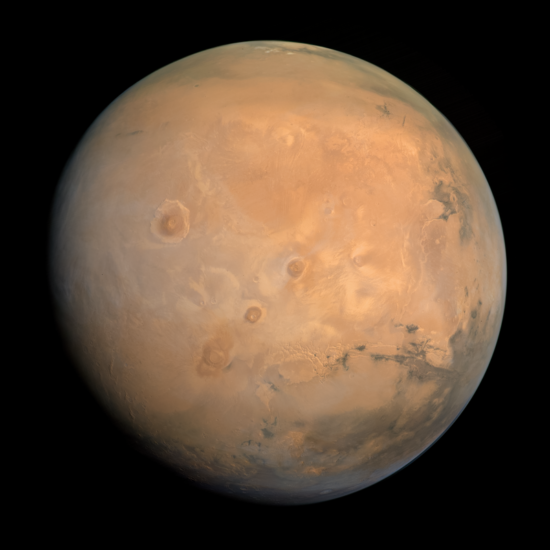
Mars in visible light. (Kevin Gill/Wikimedia Commons)
It may be our nearest neighbour, but the 'Red Planet' doesn't look that the same when seen through the ultraviolet camera on board NASA's MAVEN probe.
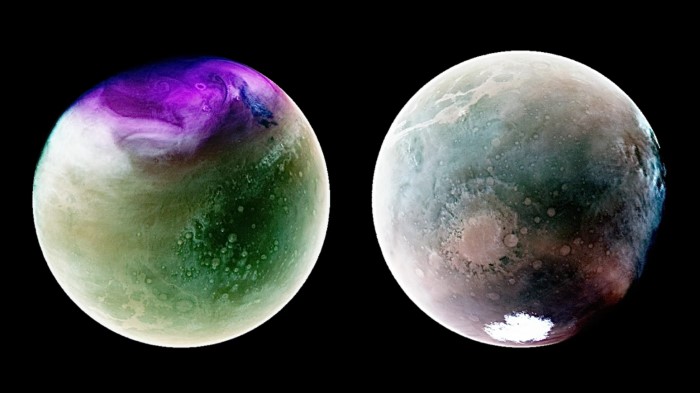
Two images of Mars under ultraviolet light. The ozone gas in the northern atmosphere looks purple! (NASA/LASP/CU Boulder)
Jupiter
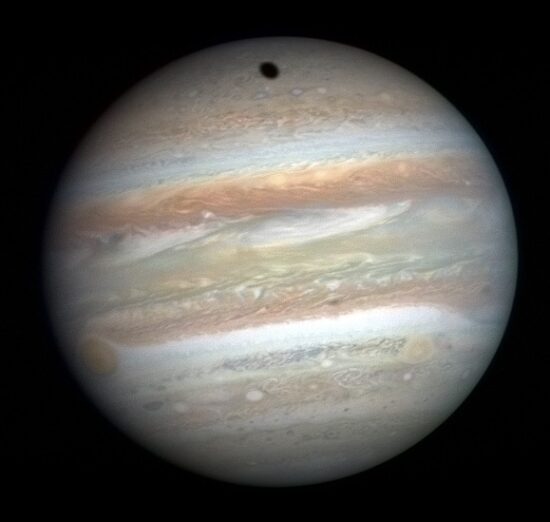
Jupiter in visible light. (NASA)
Jupiter is well known for its stripes of clouds and its giant, permanent storm known as the Great Red Spot. But in infrared as seen by the James Webb Space Telescope, all sorts of new things appear!
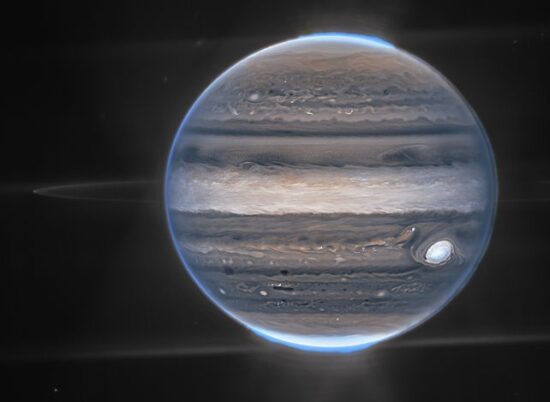
In near-infrared, you can see Jupiter's auroras (northern and southern lights) glowing like halos. (NASA, ESA, CSA, Jupiter ERS Team; Ricardo Hueso/UPV/EHU and Judy Schmidt)
Saturn
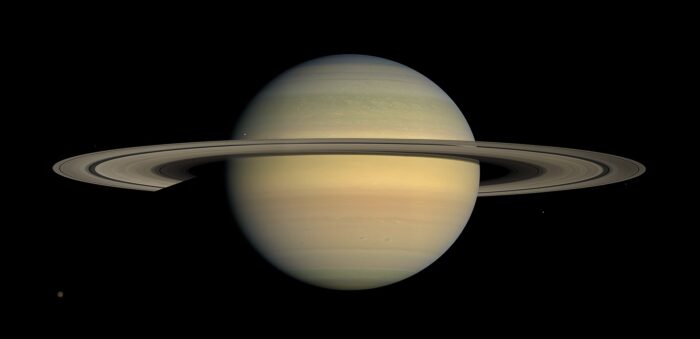
Saturn in visible light. (NASA)
Speaking of famous features, we all know Saturn for its incredible rings. But somehow, they are even more impressive under infrared light.
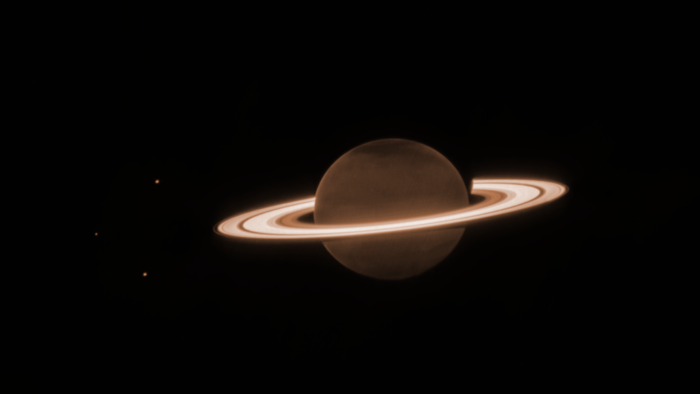
The infrared Saturn looks like it has rings made of gold! (NASA, ESA, CSA, STScI, M. Tiscareno/SETI Institute, M. Hedman/University of Idaho, M. El Moutamid/Cornell University, M. Showalter/SETI Institute, L. Fletcher/University of Leicester, H. Hammel/AURA; J. DePasquale/STScI)
Uranus
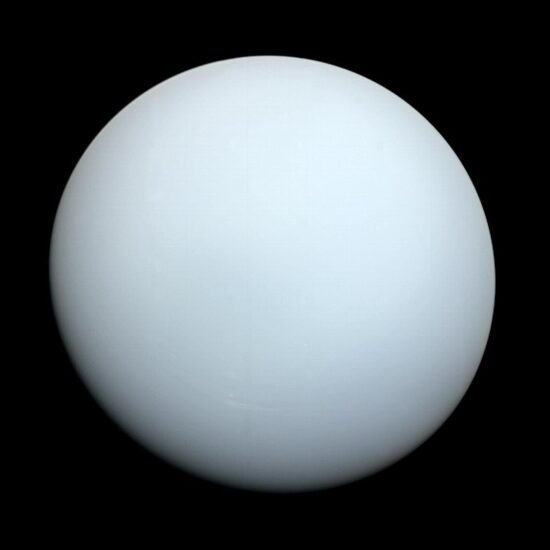
Uranus in visible light. (NASA)
The first up-close images on Uranus, which you can see above, were taken by Voyager 2. They showed a massive gas giant, as pale as a ghost. Pretty dull. But under the infrared eye of the JWST ... are those rings?
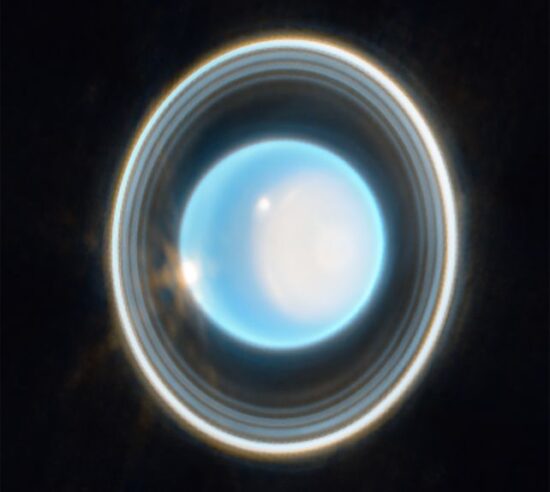
Though we already knew that Uranus had rings, this image really highlights them, as well as showing the unique axial tilt of the planet, which sees it orbiting almost fully on its side. So amazing! (NASA, ESA, CSA, STScI, J. DePasquale/STSci)
Neptune
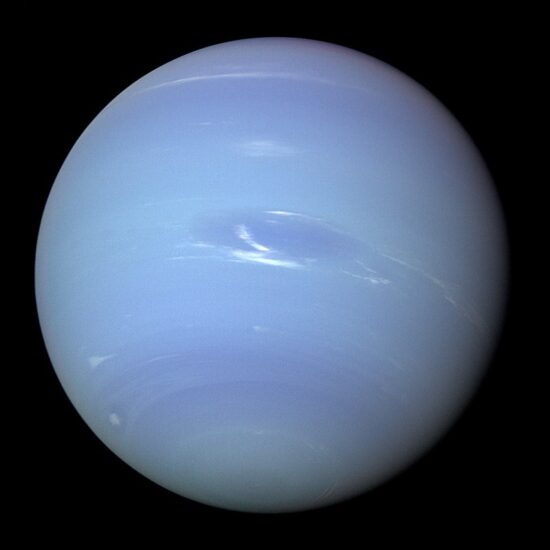
Neptune in visible light. (NASA)
Just like the deep sea that Neptune was the Roman god of, this planet is a lovely, streaked deep blue under visible light. But in infrared, it once again gleams, showing off delicate rings that we rarely see, as well as more a turbulent atmosphere.
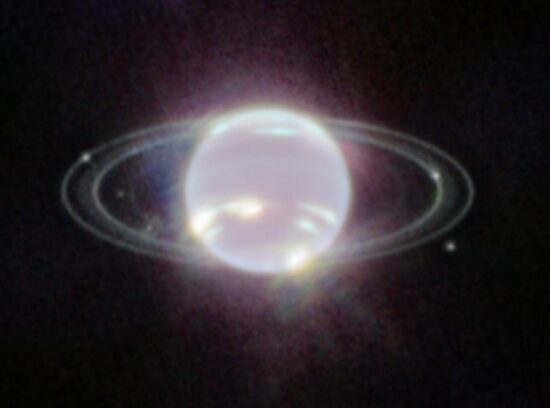
The infrared Neptune really puts on a show! (NASA, ESA, CSA, STScI, J. DePasquale/STScI, N. Rowe-Gurney/NASA-GSFC)
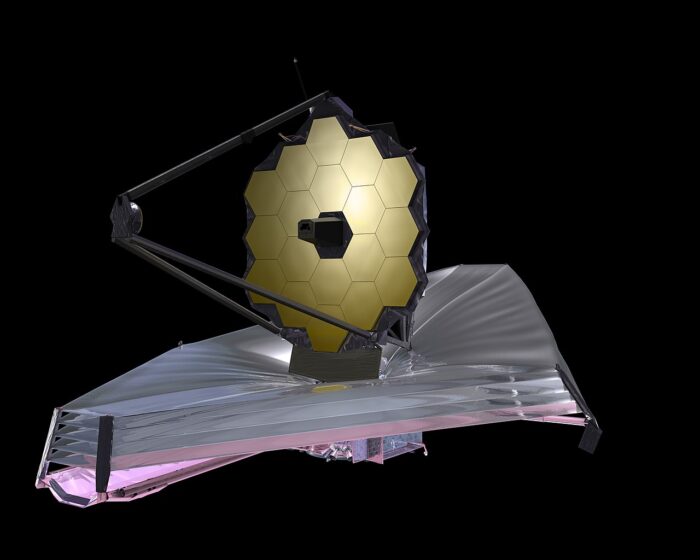 The James Webb Space Telescope took a lot of the new images in our gallery. (NASA)
The James Webb Space Telescope took a lot of the new images in our gallery. (NASA)









